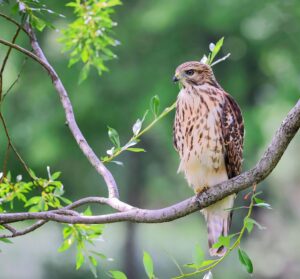Introduction
Hawks are among the most intriguing and majestic birds of prey in the avian world. Their sharp eyesight, incredible hunting prowess, and soaring flights inspire awe and admiration. This post dives into the fascinating life of hawk birds, shedding light on their habits, the different types, and the role they play in our ecosystems. Whether you’re a bird enthusiast, a budding ornithologist, or simply curious about these magnificent creatures, there’s something here for everyone.
Understanding Hawk Birds
Hawks belong to the family Accipitridae and are primarily known for their hunting skills and keen vision. These birds of prey can be found in various environments across the world—from the dense forests and sprawling deserts to the bustling cities and suburban landscapes. Hawks are adaptable creatures, each species exhibiting unique behaviors and characteristics that help them thrive in their specific habitats.
Types of Hawks
There’s a rich diversity among the species categorized under the broad term “hawk.” These birds vary significantly in size, color, and hunting techniques. Some of the most commonly recognized types include:
Red-tailed Hawk:
The Red-tailed Hawk is one of the most recognizable and widespread birds of prey in North America, serving as a quintessential example of wildlife resilience and adaptability. Characterized by its distinctive reddish-brown tail, which becomes more pronounced with maturity, this raptor is a formidable hunter that resides in diverse habitats ranging from deserts and grasslands to forests and urban areas. Its diet is versatile, mainly consisting of rodents, rabbits, and other small mammals, which it hunts with remarkable precision from great heights.

Cooper’s Hawk:
The Cooper’s Hawk, a medium-sized bird of prey, is known for its agility which allows it to maneuver through dense foliage in pursuit of its prey. Characterized by its slim body, long tail with dark bands, and rounded wings, this hawk is adept at catching birds and small mammals, often surprising them in their natural habitats. Cooper’s Hawks are found throughout North America, from southern Canada to Mexico, and exhibit two main color morphs – a darker, more uniform color in the East and a lighter variation in the West.

Sharp-shinned Hawk:
The Sharp-shinned Hawk, the smallest hawk in North America, presents an intriguing study of adaptability and precision. This raptor is distinguished by its small size, slender body, short, rounded wings, and a long, narrow tail that aids in its extraordinary maneuverability through dense forests. Its plumage typically features a slate gray back and pale underparts with thin, dark bands, allowing it to blend seamlessly into its woodland habitats.

Goshawk:
The Northern Goshawk is the larger cousin in the accipiter family, exhibiting remarkable speed and agility. It is a formidable hunter that prefers dense forests, preying on birds and mammals. With its striking gray plumage and fierce demeanor, the goshawk is a symbol of strength and prowess in the avian world.

Harris’s Hawk:
Unique among hawks for its social behavior, the Harris’s Hawk is known to hunt in packs, a rare trait in birds of prey. Found in the arid regions of the American southwest, these hawks coordinate in groups to effectively trap and capture prey, showcasing complex social dynamics not commonly observed in other raptor species.

Ferruginous Hawk:
This is the largest hawk in North America, distinguished by its rusty red back and wings. The Ferruginous Hawk prefers open country, where it hunts for rodents and rabbits from its perch or while soaring in the sky. Its impressive size and striking appearance make it a standout species among North American hawks.

Broad-winged Hawk:
A smaller hawk, the Broad-winged Hawk is most often found in forests and woodland areas. It is best known for its spectacular migration in large groups known as “kettles,” where thousands can be seen gliding through the sky in the fall. This hawk has a distinct barring on its chest and a compact, robust build that enables it to expertly navigate through dense forest canopies in search of small mammals and insects.

Habits and Hunting Skills
Hawks are diurnal birds, meaning they are active during the day. They possess exceptional hunting skills, combining speed, agility, and powerful talons to capture prey. Most hawks use their acute vision to spot potential meals from a distance, then swoop down at remarkable speeds to catch their unsuspecting prey.
Conclusion
In conclusion, hawks embody the grace, power, and complexity of the natural world. Their diverse species, remarkable hunting abilities, and intriguing behaviors make them a subject of endless fascination and an important part of our ecosystems. Though they face challenges from human activity, our understanding, appreciation, and efforts in conservation can help ensure that these majestic birds continue to thrive.
FAQs
The optimal time for observing hawks is during the morning hours, especially during their migration periods in spring and fall. This is when thermal updrafts begin to form, which hawks use to gain elevation and glide.
Hawks are generally not dangerous to humans as they are wary and avoid contact. However, small pets might be at risk in areas where hawks prey on small animals. Keeping pets supervised and using deterrents can mitigate this risk.
Supporting hawk conservation can involve a variety of actions, including preserving natural habitats, advocating against the use of harmful pesticides, and participating in or donating to organizations dedicated to the protection of bird species.
Keeping a hawk as a pet is illegal without the proper licenses and training. Falconry, the sport of hunting with birds of prey, requires extensive education, state licensing, and commitment to the bird’s welfare.

